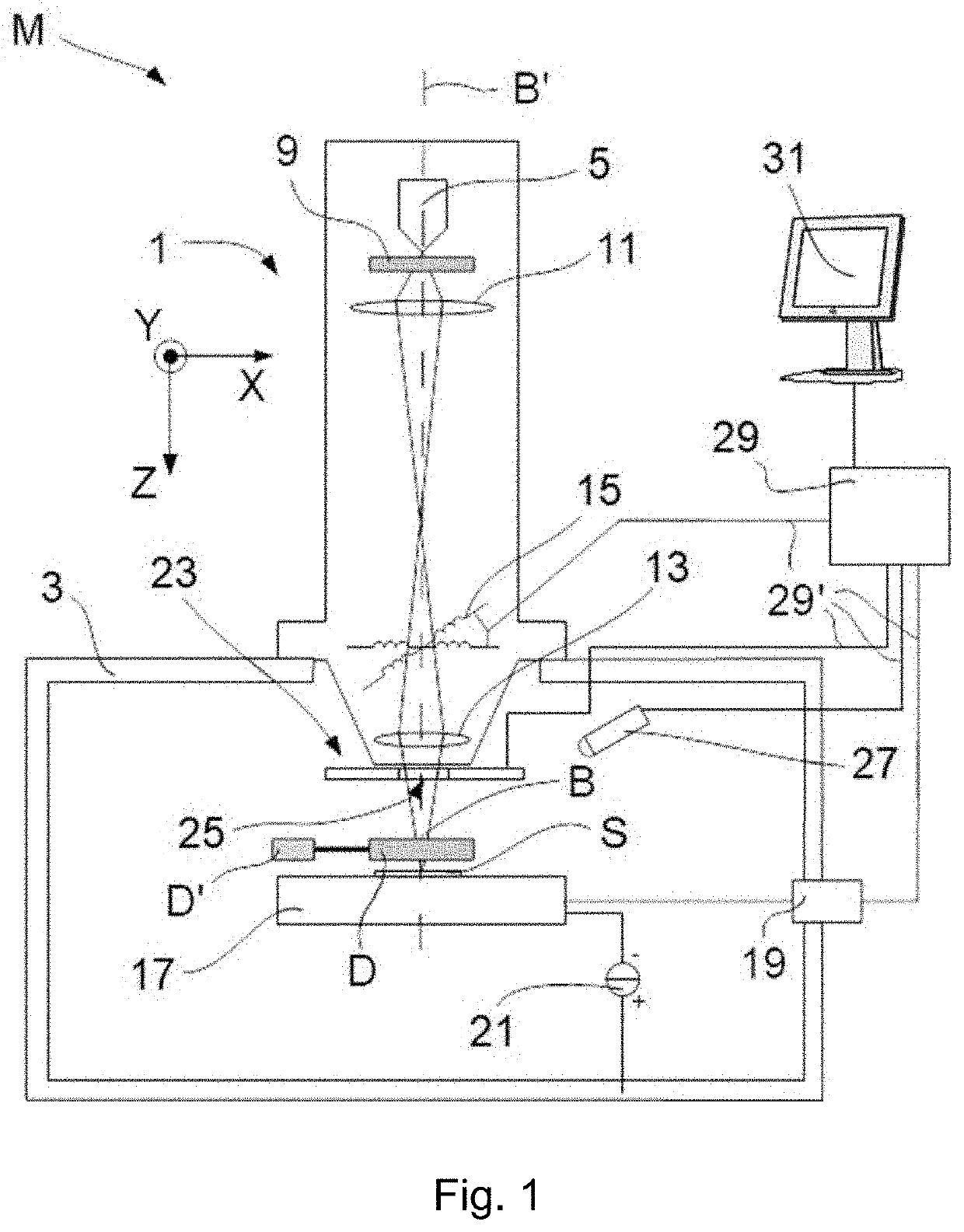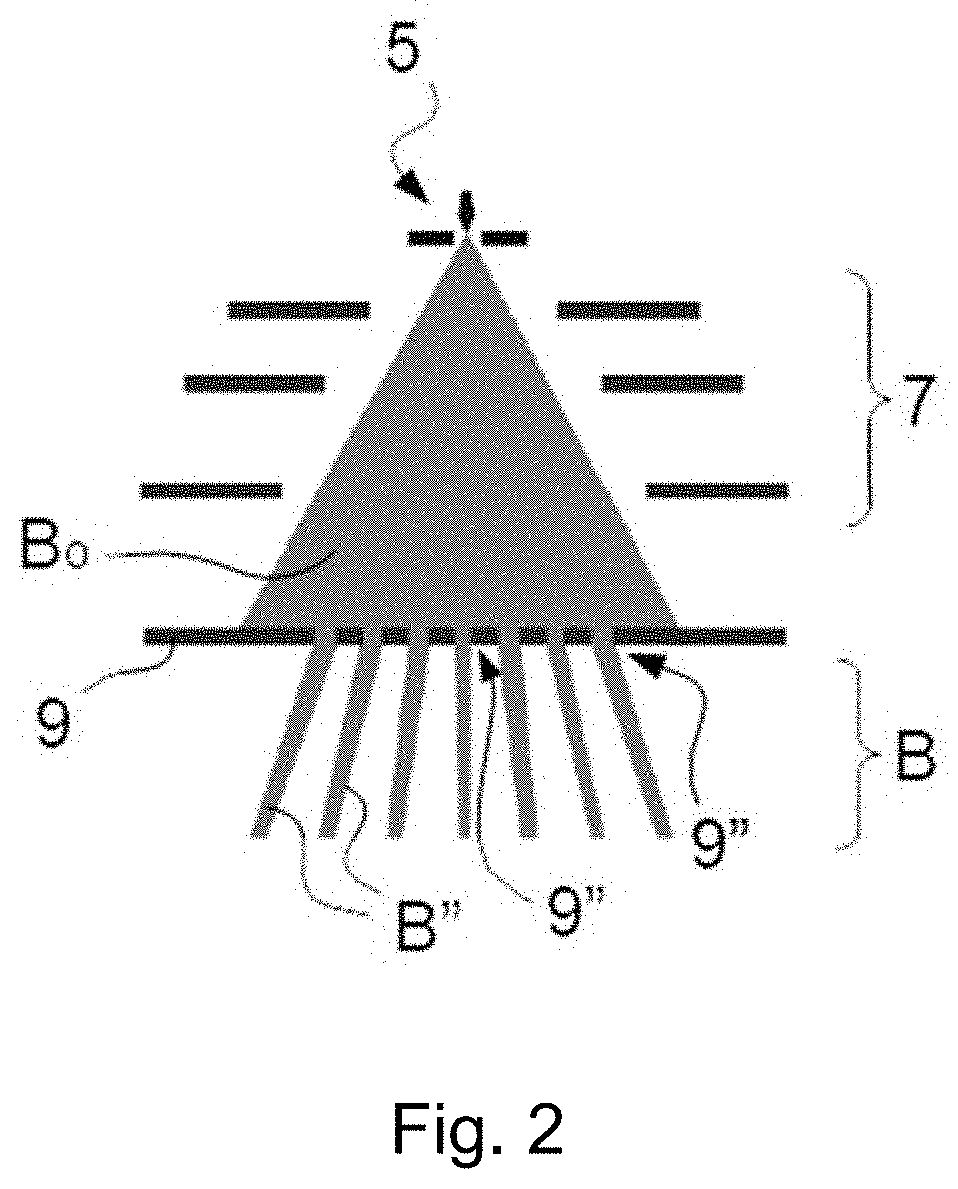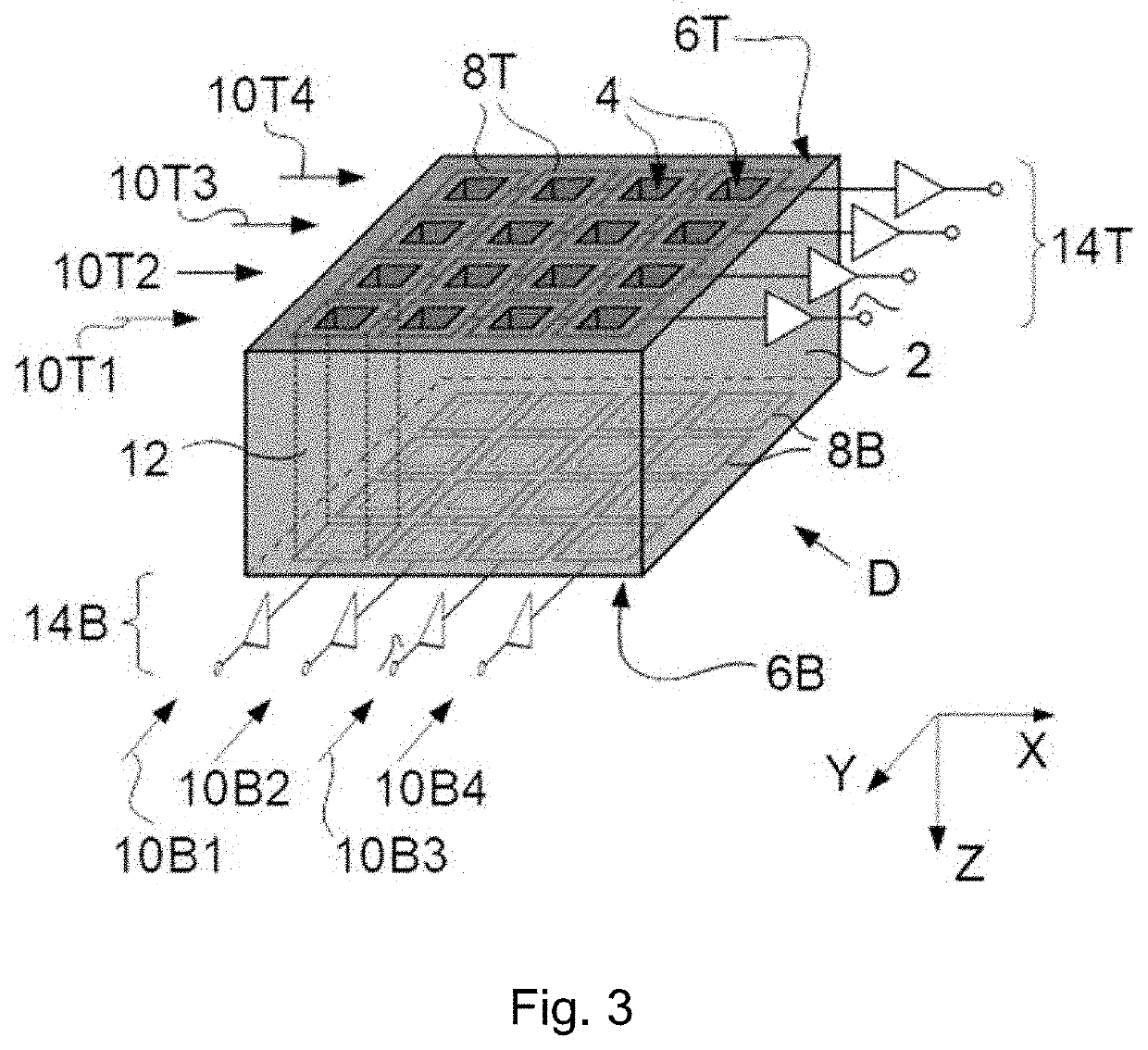Multi-beam electron microscope
a multi-beam, electron microscope technology, applied in the field of electron microscopes, can solve problems such as problems and challenges
- Summary
- Abstract
- Description
- Claims
- Application Information
AI Technical Summary
Benefits of technology
Problems solved by technology
Method used
Image
Examples
embodiment 1
[0055]FIG. 1 (not to scale) is a highly schematic depiction of an embodiment of an electron microscope M in which the present invention can be exploited; more specifically, it shows an embodiment of a SEM (though, in the context of the current invention, it could also be a STEM, for example). The microscope M comprises an electron beam column / illuminator 1, which produces an electron beam that propagates along a particle-optical axis B′. The electron beam column 1 is mounted on a vacuum chamber 3, which comprises a specimen holder 17 and associated stage / actuator 19 for holding / positioning a specimen S. The vacuum chamber 3 is evacuated using vacuum pumps (not depicted). With the aid of voltage source 21, the specimen holder 17, or at least the specimen S, may, if desired, be biased (floated) to an electrical potential with respect to ground.
[0056]The electron beam column 1 comprises an electron source 5 (such as a Schottky emitter, cold FEG or LaB6 filament, for example), lenses 11...
embodiment 2
[0074]FIG. 4 shows an alternative embodiment of the present invention, in which the employed detector (D1, D2, D3, D4) has a different architecture and operating mechanism. Similar to the situation illustrated in FIG. 3, the detector in the present embodiment comprises a sheet 2 (D1) in which an array of apertures 4 are present; however, in the present situation, this sheet 2 comprises scintillator material, such as a YAG (Yttrium Aluminium Garnet) scintillator, for example. As in FIG. 3, this sheet 2 is disposed proximal to the specimen S, e.g. within about five microns thereof. Explicitly shown in FIG. 4 are two primary electron beams B″1, B″2 in the array B, which respectively pass through two different apertures 41, 42 in the sheet 2 and impinge upon two different localities of the specimen S, respectively producing BSE fluxes F1, F2. These fluxes F1, F2 enter the scintillator sheet 2, where they precipitate localized photon emissions in the scintillator material in the vicinity...
embodiment 3
[0077]FIG. 5 renders a plan view of the beam array B in an embodiment of the present invention. In this particular case, the array B has an orthogonal geometry, though this does not necessarily have to be so chosen. As here depicted, a net / resultant scan direction at diagonal angle α has been selected, which gives a good packing density of the scan lines / tracts 18 traced out by the individual beams B″. Assuming the array B to comprise N×N beams B″ (N=4 in the current illustration), then one can, for example, choose:
Tan α=1 / N
One can, for example, effect the scanning motion at angle α using pure specimen motion, with beam deflection producing only a very small-amplitude deflection in a direction perpendicular hereto.
PUM
| Property | Measurement | Unit |
|---|---|---|
| electron microscope | aaaaa | aaaaa |
| distance | aaaaa | aaaaa |
| areas | aaaaa | aaaaa |
Abstract
Description
Claims
Application Information
 Login to View More
Login to View More - R&D
- Intellectual Property
- Life Sciences
- Materials
- Tech Scout
- Unparalleled Data Quality
- Higher Quality Content
- 60% Fewer Hallucinations
Browse by: Latest US Patents, China's latest patents, Technical Efficacy Thesaurus, Application Domain, Technology Topic, Popular Technical Reports.
© 2025 PatSnap. All rights reserved.Legal|Privacy policy|Modern Slavery Act Transparency Statement|Sitemap|About US| Contact US: help@patsnap.com



